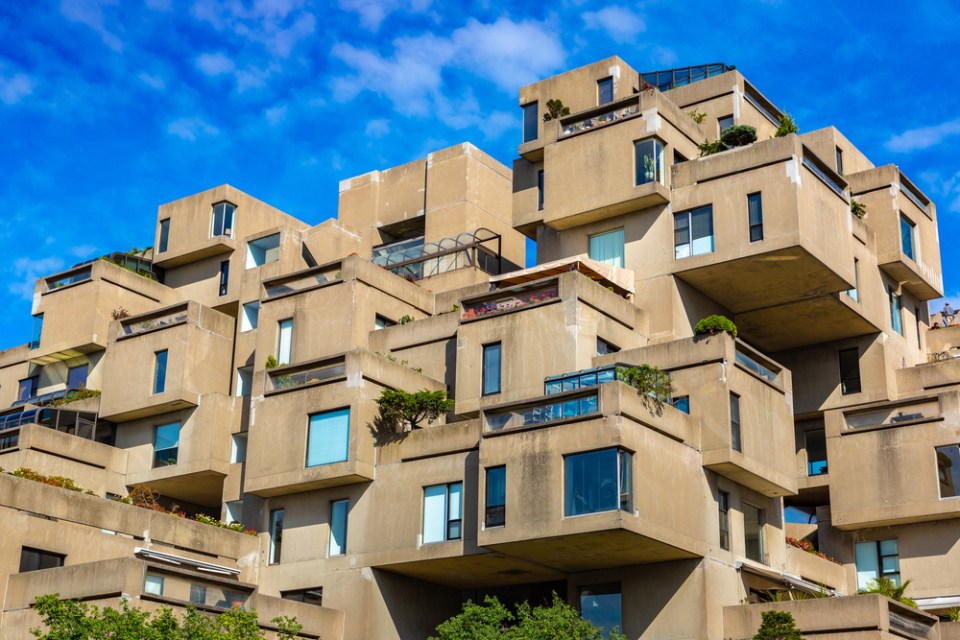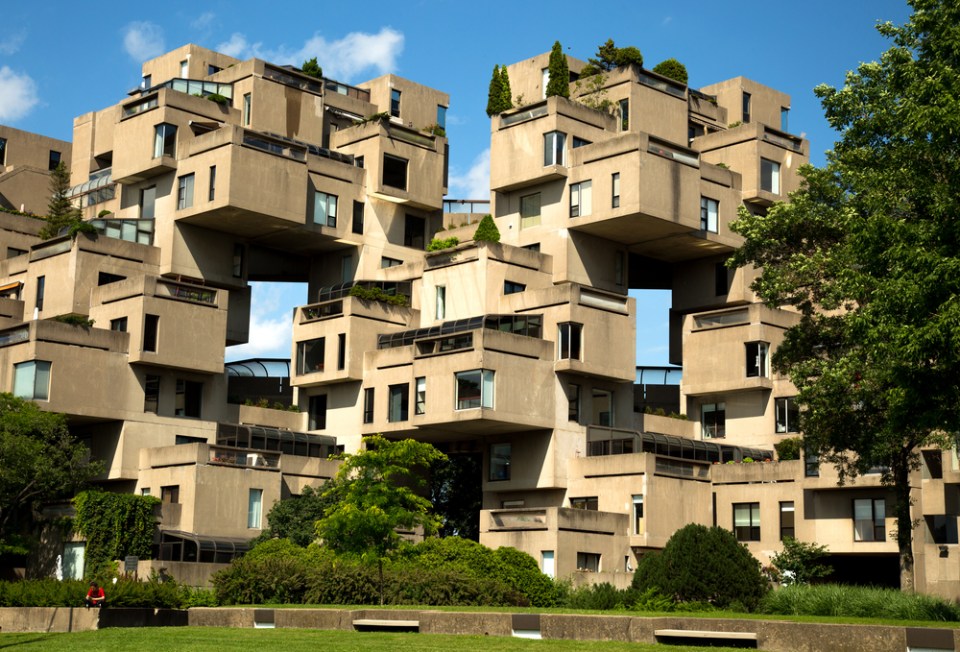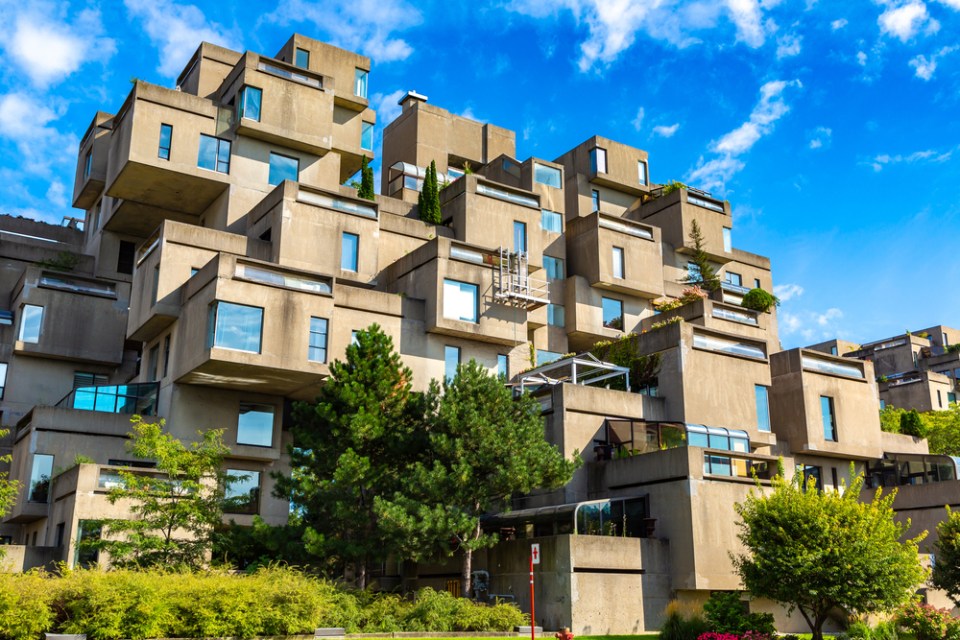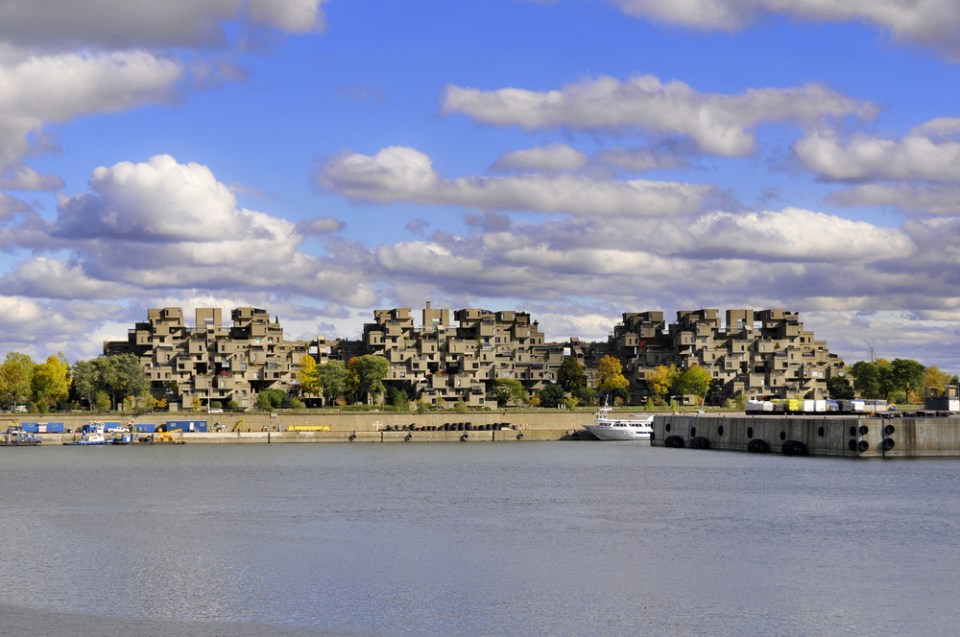f you ever find yourself in Montreal, there’s a peculiar structure on the waterfront that is bound to catch your attention. This is Habitat 67, a housing complex that was designed by Moshe Safdie as part of his graduate thesis while studying architecture at McGill University. The building was erected to provide temporary accommodation for workers from all over the world who were involved in Expo 67, the 1967 World’s Fair.
Habitat 67 is a housing complex in Montreal in a sunny day, Quebec, Canada
Photo by depositphotos.com
Habitat 67 is an experiment in modular architecture, with the aim of replicating an organic growth that combines nature with geometric patterns. It is designed in the metabolism style that was popular in Japan during the 1960s and is often linked to the Nakagin Capsule Tower. Despite being frequently referred to as a Brutalist masterpiece, Safdie contends that it is, in fact, a reaction to the Brutalist movement of that time. The Habitat was intended to enhance the quality of life for middle-class city residents.

Photo by depositphotos.com
Each unit in the building has access to a private garden, most of which are situated on top of the roof of a neighboring apartment. The 354 identical pre-fabricated boxes used in constructing the building were produced at a factory built next door specifically for this purpose. These boxes formed 158 apartments ranging from one to four bedrooms, although some units have since been merged, reducing the number to 148.

Habitat 67 is a housing complex in Montreal of 354 identical, prefabricated concrete forms arranged in various combinations, reaching up to 12 stories in height
Living in the Habitat has never been affordable. With a final cost of $22 million, it went way over budget, forcing the government-owned building to charge unusually high rental rates to recoup the construction costs. To put it into perspective, in 1968, average rents in Montreal were only a few hundred dollars for a whole house, while the Habitat charged nearly $1,000 for a one-bedroom unit. Nevertheless, the Habitat is now one of the most prestigious addresses in Montreal.
Habitat is not located in the city center, but in an industrial area with no amenities such as the Metro, shopping centers, or even other homes. This is ironic, considering that Safdie’s original plan was to create a larger community with over 1,000 apartments, shops, and a school.
Click Here to Read the Full Original Article at Unusual Places…

